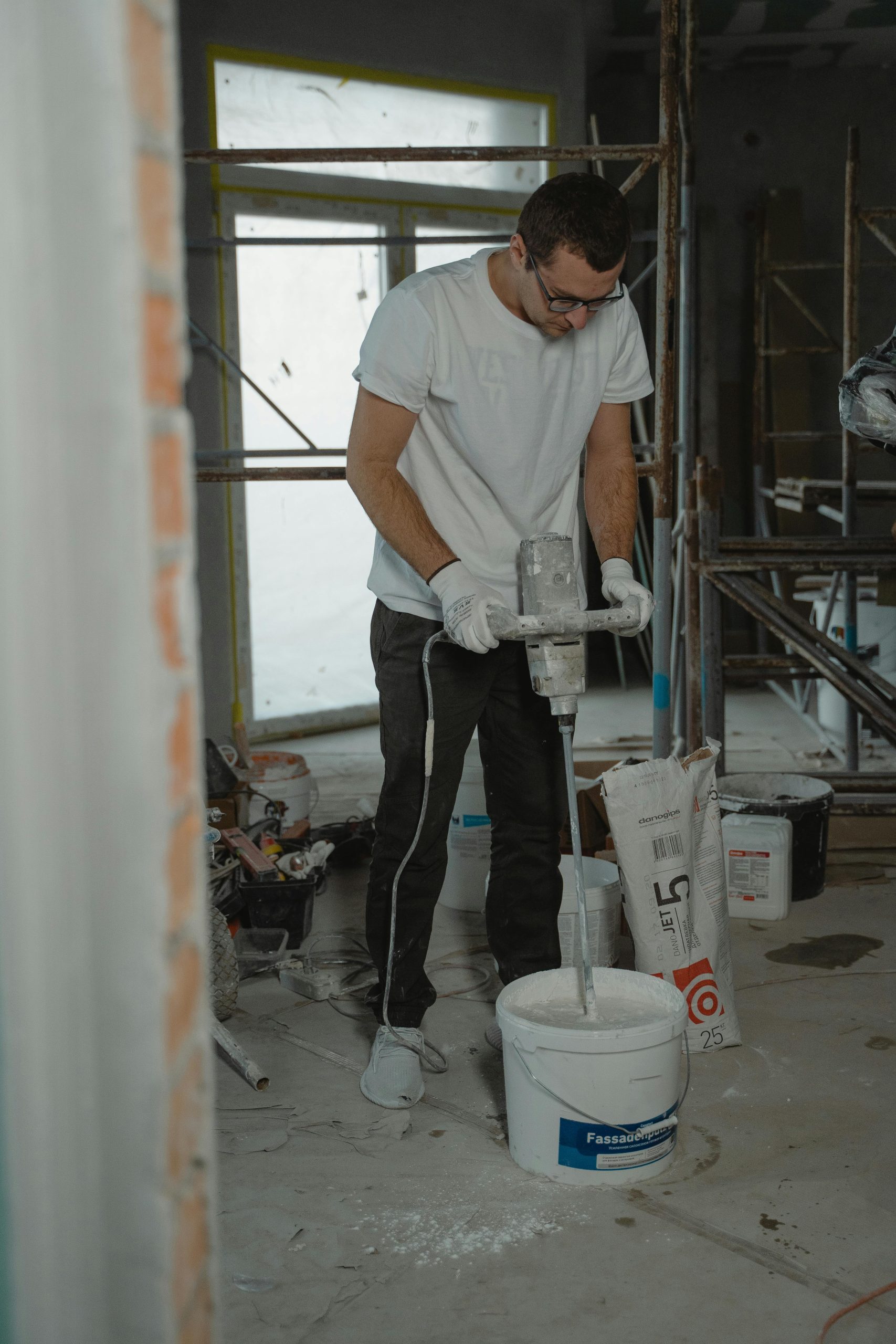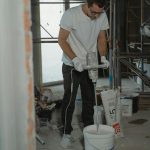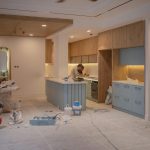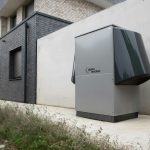Enhance your property’s durability and comfort with a waterproof render system designed to protect surfaces from moisture damage. Combining innovative premixed mortars and easy application, this solution offers reliable, long-lasting waterproofing that adapts to complex structures without extra drainage. Discover how integrating such a system can simplify maintenance, reduce risk, and add lasting value to new builds and renovations alike.
Overview of Waterproof Render Systems for Building Protection
A waterproof render system plays a fundamental role in safeguarding structures from water ingress, especially on external facades and below-ground elements. Waterproof renders are specially formulated coatings that serve as a resilient barrier, preventing water penetration and reducing the risk of structural damage caused by moisture. Their significance is particularly evident in environments exposed to harsh weather conditions, where unprotected surfaces are prone to deterioration over time.
Additional reading : Experience hassle-free mobile tyre fitting in wiltshire
These systems act as Type A barrier waterproofing solutions integral to the structural integrity of buildings. They are designed to be fully bonded to the substrate, creating a seamless protective layer that withstands high water pressures. When properly specified and installed, they avoid common issues such as cracking, water ingress, and degradation, ensuring the longevity of the building envelope.
Standards compliance is vital. A reputable waterproof render system should meet industry benchmarks like BS 8102 and certifications from recognized authorities, which verify their durability and performance in demanding conditions. For instance, the Sika®-1 Pre-Bagged Waterproofing system is BBA-approved, illustrating adherence to rigorous standards.
This might interest you : Unlock flavor and value with wholesale coffee beans today
Modern waterproof renders are distinguished from traditional cement-based coatings by their non-porous, vapor-permeable, and flexible properties. These advanced formulations accommodate structural movement, thermal expansion, and environmental stressors, greatly reducing cracks and water pathways. Typically applied in thicknesses up to 10mm, they provide a robust water-resistant barrier, especially on irregular or heavily textured surfaces where thin coatings might lack effectiveness.
In the search for the best waterproof render, factors such as adhesion strength, water absorption rates, and long-term durability are crucial. Polymer-modified and silicone-based renders excel in these areas, offering enhanced flexibility, UV resistance, and weatherproofing qualities that are essential for external walls.
Preparation remains critical: substrate assessment, thorough cleaning, priming, and moisture management set the stage for successful application. Applying render consistently and at recommended thicknesses ensures optimal performance and durability.
The selected products often include multi-stage systems such as render mortars, finishing coats, and reinforcement layers that work together to create a cohesive, protective layer. In modern construction, single-coat systems like Newton HydroCoat 1 are gaining popularity because they streamline installation, reduce costs, and deliver high-performance waterproofing in one application.
Choosing the right waterproof render system involves balancing performance, application benefits, and cost considerations. With the benefits of ease of installation, reduced maintenance, and long-term protection, they have become essential for projects aiming for resilient and watertight structures.
Technical standards, product warranties, and extensive supporting documentation including datasheets and installation guides assist specifiers in making informed choices. Proper expertise and support from manufacturers like Sika and Newton Waterproofing help ensure effective application and compliance with modern building requirements.
Characteristics and Benefits of Modern Waterproof Renders
Modern waterproof wall finish products, such as those defined in advanced render systems, combine non-porous composition, flexibility, vapor permeability, and reinforcement as core attributes. These material properties enable a durable defensive layer against water ingress, making them optimal for weather-resistant render solutions on both new builds and refurbishment projects. Unlike traditional cement-based renders, which can display inflexibility and crack formation under building movement, polymer-modified, silicone-based, or elastomeric render benefits drive enhanced durability and resilience.
Enhanced Material Performance
Waterproof wall finish systems leverage bonding agents for render and custom-graded aggregates, ensuring secure substrate adhesion and more reliable water ingress prevention. When these systems are applied often as a multi-coat or seamless exterior coating with thickness recommendations around 10mm they deliver effective protection even on irregular masonry. The flexible protective coatings directly address common issues like render crack prevention and maintain robust performance under temperature changes, wind-driven rain, or high humidity.
Long-Term Benefits for Structure and Maintenance
Adopting moisture barrier render systems and weatherproof render application methods preserves structural integrity by reducing the risk of mold, efflorescence, or freeze-thaw damage. Proactive incorporation of external wall sealing techniques ensures that the building facade protection extends well beyond visual improvement, supporting anti-crack render solutions and minimizing maintenance. For areas subject to challenging conditions such as basements, high water tables, or coastal environments cementitious waterproof render, silicone-based waterproof renders, or render system for high-humidity areas are critical for longevity.
Durability and Versatility
Render system durability is achieved by formulating coatings that are UV resistant render finishes and salt-resistant exterior coatings. These options, including render system for commercial buildings or render system for residential buildings, are engineered for both performance and visual appeal, supported by a wide array of render texture options and waterproof render color choices. Their performance under rain, exposure, or even accidental impact ensures protections for concrete render waterproofing and masonry surfaces alike.
Practical Installation and Environmental Considerations
Render system installation guide documentation recommends careful substrate preparation, proper use of render adhesive properties, and controlled render waterproof membrane integration for optimal bond and coverage. The waterproof render curing process and application must adhere strictly to environmental conditions for proper setting and functional durability. Modern options like sustainable render products and eco-friendly render solutions now address render system environmental impact without sacrificing technical performance.
In summary, modern waterproof wall finish and weather-resistant render solutions do more than repel water—they actively enhance building longevity, reduce upkeep, and offer reliable facade weather resistance even in demanding environments. Render system compatibility and versatility across multiple surface types make them a sound investment for lasting building protection.
Types of Waterproof Render Systems and Material Technologies
Precision in waterproof render selection is foundational to building facade protection and the prevention of water ingress. The best waterproof render system approach begins with an understanding of core material technologies: cement-based, polymer-modified, and silicone-based waterproof exterior coating options. Each type has unique strengths that contribute directly to render system durability and overall performance under severe weather exposure.
Cement-Based Waterproof Renders
Cementitious waterproof render provides durability and is widely relied upon for large-scale waterproof wall finish applications, especially in commercial and residential builds. These systems are engineered to serve as robust moisture barrier render systems, delivering extensive protection against water penetration. However, the inherent rigidity of cement-based renders makes them susceptible to crack formation in response to substrate movement or environmental shifts. To uphold render system longevity, careful render substrate preparation and attentive application are essential. Incorporation of bonding agents for render improves the overall adhesive properties, allowing the waterproof exterior coating to adhere securely to diverse surfaces.
Polymer-Modified Waterproof Renders
Polymer-modified systems raise the bar for weather-resistant render solutions. Enhanced with flexible polymers, these products increase both the flexibility and the compatibility of the waterproof wall finish, even on challenging surfaces prone to movement or irregularity. This flexibility supports anti-crack render solutions and accommodates substrate shifts without compromising the integrity of the protective render layers. These flexible protective coatings outperform traditional damp-proof exterior render by resisting water penetration, reducing the risk of spalling, and allowing for a broader range of application in both new construction and restoration projects. Their superior adhesion is especially valuable for external wall sealing techniques where robust bond strength and render system compatibility are required.
Silicone-Based Waterproof Renders
For projects requiring high-performing UV resistant render finishes, silicone-based waterproof renders deliver optimal rain resistance and long-term effectiveness. Their hydrophobic properties make them top-tier in water-repellent surface treatments and render weathering issues, promoting effective water ingress prevention in external wall installations. The renders’ vapor permeability also allows the building to breathe, which is a significant advantage in moisture management and the maintenance of healthy internal environments, particularly in structures susceptible to condensation or high humidity. Despite requiring multistage weatherproof render application, silicone-based products provide an unrivaled blend of facade weather resistance and robust performance.
Multilayer Systems and Advanced Formulations
Modern render systems, such as those detailed in recent technical specifications, often utilize a sequence of specialized mortars spritz, render, and finishing coats to maximize moisture barrier render systems and concrete render waterproofing for both vertical and overhead surfaces. Pre-blended, pre-bagged mortars simplify the render mixing and application techniques process, ensuring uniform render performance under rain, consistent thickness, and reduced risk of error during installation. These cohesive suites allow for seamless exterior coatings across complex geometries and facilitate smooth render system installation guide adherence on-site.
Precision in render layer adhesion enhancement, combined with rigorous render substrate compatibility assessments, ensures the cementitious waterproof render or advanced polymer and silicone blends can withstand aggressive weather, physical wear, and the demands of structural waterproofing. The result is an engineered envelope that excels in water ingress prevention ideal for waterproof render for basements, repair, or new construction while delivering aesthetics through optional render texture options and waterproof render color choices to match architectural vision.
Application Techniques, Surface Preparation, and Performance Optimization
Optimal waterproof exterior coating application starts with comprehensive substrate assessment. Before any waterproof render or weatherproof render application begins, professionals evaluate substrate hardness, porosity, and cleanliness. Surfaces must be clean, sound, and free from contaminants to ensure maximum adhesion for any damp-proof exterior render or protective render layers. For building facade protection and long-term render system durability, surface preparation is non-negotiable.
Surface Assessment and Preparation Steps
- Thorough substrate inspection detects weaknesses that could compromise the water ingress prevention plan.
- Repairing structural cracks and defects is essential before applying render adhesive properties or any flexible protective coatings.
- Priming and sometimes wetting the substrate regulate moisture absorption, preventing rapid water loss from the render mix. This control supports proper curing and enhances waterproofing masonry surfaces protection.
Application Methods and Performance Factors
Consistent waterproof wall finish relies on the correct application of moisture barrier render systems. Key steps involve:
- Following precise render thickness recommendations, especially for weather-resistant render solutions exposed to harsh elements or high water pressure zones.
- Ensuring correct overlap at joints—critical for external wall sealing techniques and render waterproof membrane continuity.
- Careful monitoring of environmental conditions like humidity and temperature. These factors directly affect the render waterproofing for windows and doors, overall system longevity, and render performance under rain.
- Controlled curing conditions prevent premature drying or improper set, securing anti-crack render solutions and reliable concrete render waterproofing.
Thick, Durable, Seamless Protection
The most effective waterproof render for basements and exposed walls features a multi-coat approach. Systems such as the Sika 1 render 3-coat system build robust, seamless exterior coatings layer by layer. Use of sprayable or hand-applied methods depends on project scale and shape, but results are only as good as the render substrate preparation.
For demanding environments, selecting elastomeric render benefits or silicone-based waterproof renders maximizes movement tolerance and prevents failure from building shifts, freeze-thaw cycles, or long-term moisture.
Performance Optimization and System Compatibility
Optimizing render system compatibility means:
- Using bonding agents for render that match both base material and topcoat.
- Adopting UV resistant render finishes and salt-resistant exterior coatings in coastal or high-exposure sites for resilient protection.
Quality assurance involves rigorous render surface adhesion testing and close adherence to a manufacturer’s render system installation guide. The right combination of preparation, application, and environmental awareness delivers lasting facade weather resistance, helping prevent costly render repair and restoration down the line.
Achieving the best waterproof render outcome depends on strict preparation, skilled application, and attention to site-specific performance demands.
Innovations and Single-Coat Waterproof Render Systems
Advanced waterproof render systems, such as Newton HydroCoat 1 and Sika®-1, have transformed the approach to moisture barrier render systems and weather-resistant render solutions. These systems rely on pre-bagged mortars enhanced with powerful bonding agents for render, making application efficient and minimizing site error. The incorporation of waterproofing admixtures into pre-mixed bags ensures all critical components are evenly distributed, raising render system durability to new standards.
Single-coat waterproof render for basements is a standout innovation. Newton HydroCoat 1 simplifies barrier protection by requiring only water for mixing, eliminating the need to measure or blend in waterproofing additives on-site. Its streamlined solution supports external wall sealing techniques and delivers fast, reliable coverage, ideal for both new builds and remedial works where interruption from water ingress prevention is a concern.
The Sika®-1 Pre-Bagged system exemplifies modern efficiency with its three-coat render system and screed variant for floors. All mortars in this system include waterproof admixtures and are compatible with most substrates, reducing application complexities. The process fosters better adhesion via dedicated bonding agents for render, making these products suitable for weatherproof render application even in high water table scenarios, critical for below-ground structures.
Consistency in waterproof exterior coating is further reinforced by these systems’ ability to bond tightly even to irregular surfaces. Their durability supports the protective render layers needed for long-lasting building facade protection, resisting water absorption, and allowing for flexibility across a range of project demands. The Sika®-1 Low Cement (LC) Render variant features sustainable components, upholding environmental goals while offering strong weather-resistant render solutions.
Their robust performance is supported by thorough technical documentation and render system product certifications, guaranteeing correct specification and installation. Systems like Newton HydroCoat 1 and Sika®-1 are certified for use in challenging environments and offer reliable defense against concrete render waterproofing failure, outperforming many older cementitious waterproof render options by enabling faster curing and lower labor costs.
With pre-bagged innovations, render system installation guides are clearer, and external wall sealing techniques are more accessible, supporting construction professionals in delivering projects that withstand severe environmental exposure. These waterproof render systems set a benchmark for performance, cost-effectiveness, and ease of application, ensuring lasting results for both residential and commercial structures.
Supporting Waterproofing Products and System Integration
To achieve comprehensive waterproofing masonry surfaces, relying on a single render layer is rarely sufficient. Instead, a robust waterproof exterior coating is best supported by carefully selected complementary systems that reinforce wall and floor protection. Key products such as liquid-applied membranes, pre-formed sheet membranes, cavity drainage systems, crack injection resins, and advanced sealants expand the envelope of defense, each targeting specific vulnerabilities where water ingress can threaten durability and usability.
Selecting the right components begins with understanding their roles in moisture barrier render systems. For instance, liquid membranes deliver seamless, adaptable coverage, right into difficult angles and small details on the building facade. Sheet membranes build upon this by adding a mechanical barrier beneath external wall waterproof membrane finishes ideal for critical zones in high-humidity areas. Both approaches enhance the overall weather-resistant render solutions, boosting the capacity of the render to block water, salts, and frost, especially where external wall sealing techniques are crucial.
Spacing and compatibility between render system installation guide recommendations and supporting waterproofing materials is essential. The bond strength achieved with high-quality bonding agents for render reduces risk of detachment, while crack injection repairs create continuous, unbroken waterproofing. These coordinated interventions also maximize the longevity of render system durability, minimizing the likelihood of costly failures or premature maintenance demands.
For render system product certifications, compliance cannot be compromised. The best waterproof render for external and internal applications is always supported by a thorough set of technical documents: product datasheets clearly detail mix and application instructions; installation guides ensure correct sequencing and coverage; and BBA (British Board of Agrément) approval provides third-party reassurance that weatherproof render applications meet industry standards for safety, performance, and suitability. This documentation is especially important for projects requiring render system for residential buildings or more demanding environments, such as coastal or freeze-thaw exposed sites.
Integrated systems that combine protective render layers and seamless exterior coatings significantly elevate water ingress prevention. Not only do they safeguard masonry against damage, but they also protect the aesthetic and energy performance of buildings delivering enduring advantages of waterproof rendering for the lifecycle of a structure.
For any modern build or renovation, ensuring that the chosen waterproof wall finish is paired with compatible, certified accessories is the cornerstone of sustainable render products and effective weatherproof render application. This process keeps the building’s envelope intact, reliable, and ready to meet both environmental and regulatory demands.
Practical Considerations: Cost, Maintenance, and Long-term Durability
Applying a waterproof exterior coating is an effective step towards strengthening building facade protection and extending the lifecycle of external structures. One of the most decisive factors in waterproof wall finish solutions is long-term cost-effectiveness, determined by initial investment, required maintenance, and render system longevity.
Cost Factors in Waterproof Render Systems
The upfront cost of a weather-resistant render solution depends on the chosen render—whether cementitious waterproof render, silicone-based waterproof renders, or polymer-modified options. Multi-coat protective render layers, such as three-coat systems, may increase labor and material expenses, yet they often enhance water ingress prevention and reduce future repair frequency. When comparing waterproof render system costs, consider how advanced damp-proof exterior render products, while sometimes pricier initially, yield savings by lowering lifecycle maintenance requirements and extending render system durability in harsh environmental conditions.
Maintenance and Inspection
Routine render maintenance tips contribute strongly to performance and visual quality. Effective maintenance includes:
- Regular inspection and crack monitoring to spot early signs of water ingress or substrate movement.
- Prompt cleaning of render surfaces to remove salts, moss, or pollutants, especially important for UV resistant render finishes and salt-resistant exterior coatings.
- Timely re-sealing using suitable bonding agents for render, particularly where weatherproof render application is exposed to driving rain, frost, or freeze-thaw cycles.
Opting for flexible protective coatings and moisture barrier render systems helps buildings withstand movement and settlement without surface cracking. Elastomeric render benefits become clear in areas with frequent temperature fluctuations or high humidity, preserving both aesthetics and the barrier’s integrity. Render repair and restoration are simplified for modern systems due to advances in concrete render waterproofing and anti-crack render solutions.
Durability and Lifecycle Considerations
The render system durability is influenced by factors such as installation quality, compatibility with existing substrates, weatherproof render application method, and ongoing effects of humidity on renders. Durable systems are designed for long-term water ingress prevention, offering reliable external wall sealing techniques and robust waterproofing masonry surfaces—particularly critical for waterproof render for basements or high-humidity areas.
Special attention should be given to facade weather resistance, ensuring that UV resistant render finishes and water-repellent surface treatments remain effective as protective render layers over decades. Choosing render system for coastal areas or high-moisture sites requires a tailored approach, favoring anti-crack and frost-resistant render systems. Select render system for new constructions or render system for renovations according to the environmental conditions and substrate compatibility to ensure render performance under rain and adverse weather.
Adhering to professional render system installation guides, including proper render substrate preparation, render thickness recommendations, and render waterproof membrane placement, is essential for maximizing system longevity. Regular upkeep, as outlined in render maintenance tips, will ensure that building facade protection remains uncompromised, keeping external wall waterproof membrane solutions performing as intended.
Ultimately, investing in cost-effective waterproof renders improves the building’s resistance to weathering, strengthens render crack prevention, and provides significant savings through fewer restoration interventions—proving that diligent attention to cost, maintenance, and durability pays off across the life of the structure.
BODY
A waterproof render system is engineered to act as a physical barrier, shielding exterior and interior surfaces from persistent moisture intrusion and environmental stress. Using the Sika®-1 Pre-Bagged system as a model, these solutions are especially valued for walls, floors, and ceilings that require formidable protection against water ingress—common in basements, wet rooms, and structures in high water table locations.
Waterproof exterior coating and weather-resistant render solutions provide exceptional durability by integrating waterproofing admixtures directly in the mix. These admixtures ensure that each protective render layer is uniform, minimizes porosity, and adheres robustly to various substrates such as masonry or concrete. This is essential for building facade protection, where external wall sealing techniques must be dependable under both high and low temperatures, UV exposure, and repeated wetting.
The use of damp-proof exterior render solutions expands on these benefits. By forming a water-repellent barrier, even over irregular surfaces, these render systems out-perform many traditional barriers. The three-coat approach comprising spritz, render, and finishing coats ensures that each layer addresses specific waterproofing and structural requirements. The versatility of this approach supports not just waterproofing masonry surfaces but also enables tailored render system installation guides for both new and refurbished constructions.
One of the main advantages of these render systems is their ability to resist high water pressure and conform to challenging architectonic surfaces. Render system durability stems from this adaptability alongside low water absorption, which prevents long-term degradation and costly maintenance. When properly executed, the render waterproof membrane integrates seamlessly with external wall waterproof technologies, making it an invaluable solution for weatherproof render application and moisture barrier render systems in a spectrum of building contexts.
Selecting the appropriate render system means considering the environmental impact, longevity, flexibility (important in elastomeric render benefits), and practical factors such as curing times and compatibility with thermal insulating render or UV resistant render finishes. Whether choosing cementitious waterproof render or exploring silicone-based waterproof renders, clear render maintenance tips and repair-and-restoration guidance ensure continued facade weather resistance.
By meticulously following render substrate preparation and substrate compatibility protocols, project managers and contractors can confidently apply protective render layers that deliver effective waterproofing and long-term performance for modern and heritage properties alike.











